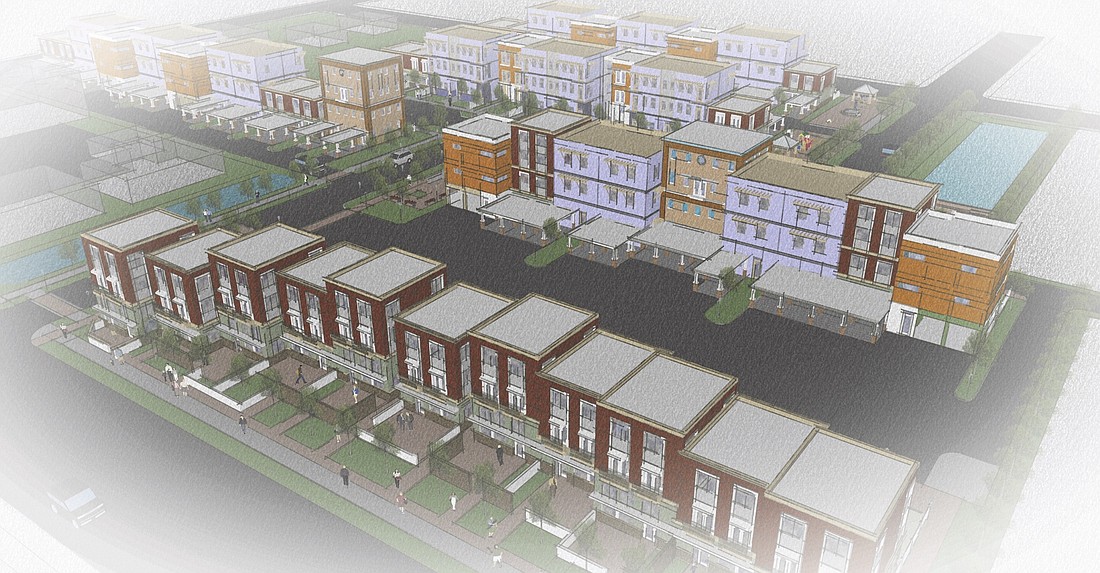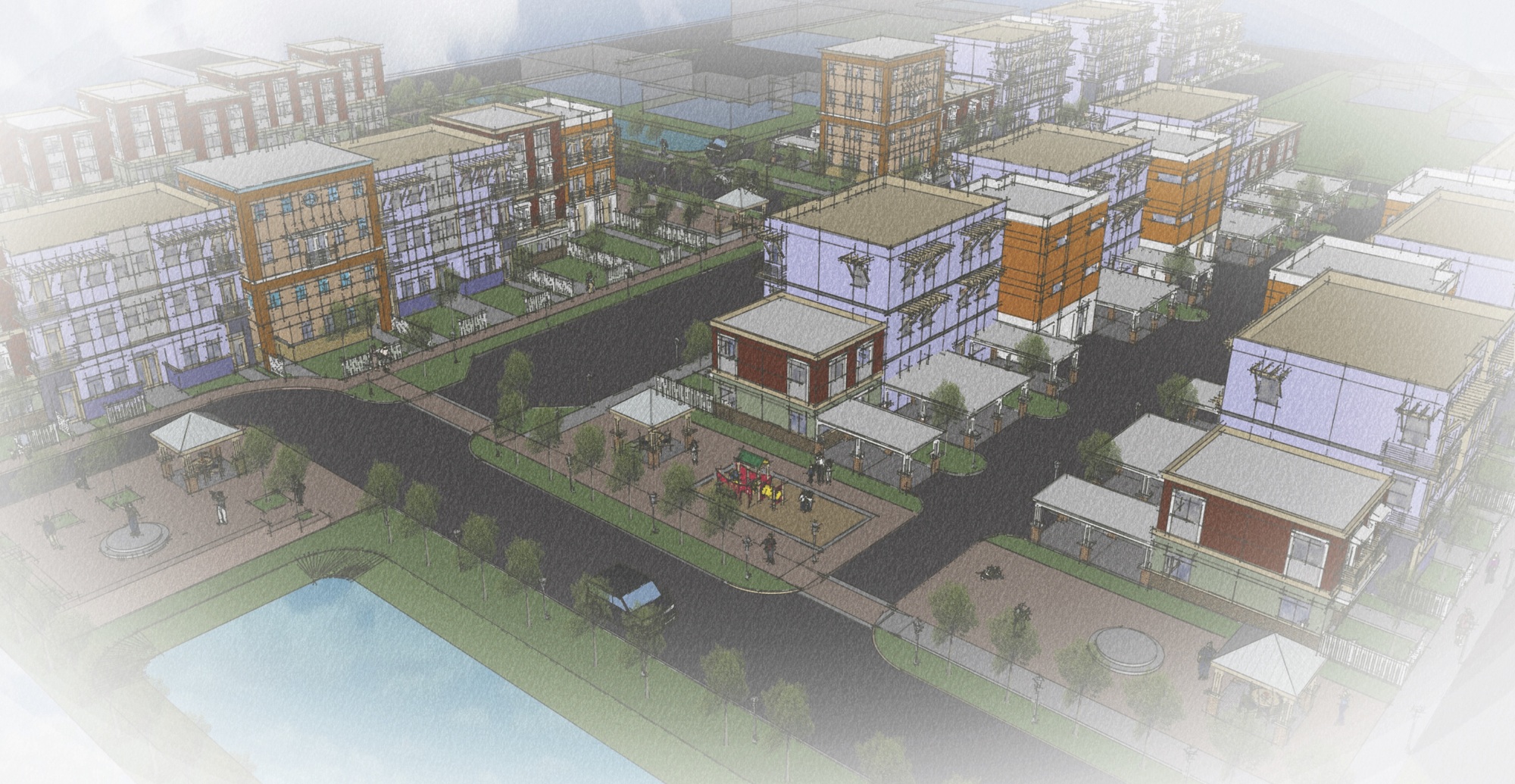- April 25, 2024
-
-
Loading

Loading

Recognizing the need for affordable housing in the community — and hoping to encourage activity in a redeveloping area — a local government is partnering with a private developer on a residential project targeted at artists and young people, among others.
If all goes according to plan, this development will be a significant addition to Bradenton’s Village of the Arts, a growing artist community south of the city’s downtown core.
As groups within the city of Sarasota pursue a different artist housing project for the North Trail, the local approach diverges from the path being forged in Bradenton. Why is Sarasota’s effort coming from an external push, rather than its governmental officials — and why are public/private affordable housing developments less common here?
Beneficial Communities, the developer behind the Bradenton proposal, has a portfolio of both affordable and market-rate residential projects. The group has developments throughout Florida and states such as Georgia, Alabama, Pennsylvania and Illinois.
One place where Beneficial Communities doesn’t have any projects? Sarasota, the city in which the developer is based.

Kenny Bowron Jr., a developer with Beneficial Communities, explained there is an intensive process to make a subsidized private affordable housing project a reality. The developer goes through a competitive application process to get tax credits from the state — in Florida, a lottery system decides which proposals get selected — that can then be leveraged to finance a project.
In exchange for those state tax credits, the developer is required to rent units for between 40% and 60% of the area median income, which is $62,300 for a family of four. Scaling down for individual renters, this allows Beneficial Communities to target younger working individuals who might make just north of $20,000 annually.
“We’re kind of shooting for the millennials up there in Bradenton,” Bowron said. “We’re working with the local young professional groups, using some of the local neighborhood behind us to reach out to the artist community and even recent graduates at Ringling.”
This particular property is owned by the city, located at 1404 14th St. W. on the border of Village of the Arts. In soliciting proposals for the land, the Bradenton Downtown Development Authority specifically sought out a workforce housing project before selecting the Beneficial Communities development as its favored plan.
Although the essential tax credits come from the state, Bowron said the individual municipality plays a key role in the funding process. The state requires a local government contribution for a project to obtain tax credits — to maximize the odds, the cost is $50,000 in Sarasota and $37,500 in Manatee County. That commitment that shows the municipality’s dedication to a given proposal.
“That can be done through a grant or loan or impact fee waivers, stuff along those lines,” Bowron said. “It shows they know about the project, and they’re willing to put some skin in the game to make it happen.”
"As far as tax credits go, I think Sarasota County has been concentrating on redeveloping the housing authority sites." — Kenny Bowron Jr.
In seeking its allotment of tax credits, Bowron said, Sarasota County tends to favor public housing projects through the Sarasota Housing Authority. Alongside other barriers that have prevented the widespread development of affordable housing in the area, private developers haven’t keyed in on Sarasota as a market to build projects of that nature.
“One part of it is that there’s not a ton of multifamily-zoned land in Sarasota County,” Bowron said. “Plus, as far as tax credits go, I think the county has been concentrating on redeveloping the housing authority sites.”
Through Artspace, a Minneapolis-based nonprofit developer of artist live-work housing, Sarasota groups hope they can land their own affordable residential project.
Work on recruiting Artspace to Sarasota began in spring 2014, but progress has stalled after the consultant’s initial report in May of that year.
Jim Shirley is the head of the Arts and Cultural Alliance of Sarasota County, the organization that’s spearheading the Artspace effort. He says a crowdsourcing fundraiser for the next phase of the project should begin this fall. The group hopes to raise $40,000 to produce a more detailed market study, which Artspace requires before proceeding with any development.
"Artspace, when they get involved, commits to being involved for the long haul." — Jim Shirley
Shirley says the Arts Alliance has tried to work closely with the city, county and associated agencies whenever affordable housing discussions arise, but no government-initiated project has come up over the past five years or so. Shirley says an Artspace project is particularly attractive, though, because the nonprofit agrees to manage the property in perpetuity to assure it remains affordable.
“Artspace, when they get involved, commits to being involved for the long haul,” Shirley said.
If a project is to come to fruition, it will inevitably have to include local government buy-in, according to Artspace Senior Vice President Wendy Holmes. The city already donated $5,000 toward the initial visit, but an actual development will require a more significant commitment.
“All of these projects are public and private partnerships,” Holmes said in a 2014 interview. “It takes a lot of participation by a lot of people to make these projects possible.”